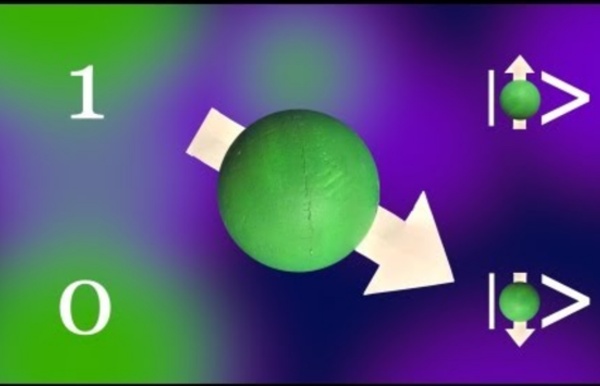



http://www.youtube.com/watch?v=g_IaVepNDT4
Related: frf1344 • mecanimal approach • ressourcesA Guy Created Hilarious Fake Animal Facts & Put Them Up At The Zoo If you've ever been to a zoo, you know that those little 'blurbs' on the animal signs can often go overlooked. Most people don't care what country the red-tailed hawk originated from or the typical shade of bamboo koalas prefers to snack on at night. Comedian Jeff Wysaski (aka Obvious Plant), decided to spice up those fun facts by making them, well, not facts at all. eVa's 3D- memory MIT researchers have shown, for the first time ever, that memories are stored in specific brain cells. By triggering a small cluster of neurons, the researchers were able to force the subject to recall a specific memory. By removing these neurons, the subject would lose that memory.
How Matter Lost Its Mojo You’re sitting here, reading this article. Maybe it’s a hard copy, or an e-book on a tablet computer or e-reader. It doesn’t matter. An American Tragedy The election of Donald Trump to the Presidency is nothing less than a tragedy for the American republic, a tragedy for the Constitution, and a triumph for the forces, at home and abroad, of nativism, authoritarianism, misogyny, and racism. Trump’s shocking victory, his ascension to the Presidency, is a sickening event in the history of the United States and liberal democracy. On January 20, 2017, we will bid farewell to the first African-American President—a man of integrity, dignity, and generous spirit—and witness the inauguration of a con who did little to spurn endorsement by forces of xenophobia and white supremacy. It is impossible to react to this moment with anything less than revulsion and profound anxiety. All along, Trump seemed like a twisted caricature of every rotten reflex of the radical right. In the coming days, commentators will attempt to normalize this event.
body example Figure 1 : The ribosome assembles polymericproteinmolecules whose sequence is controlled by the sequence of messenger RNA molecules. This is required by all living cells and associated viruses. The sequence of DNA encoding for a protein may be copied many times into messenger RNA (mRNA) chains of a similar sequence. Ribosomes can bind to an mRNA chain and use it as a template for determining the correct sequence of amino acids in a particular protein.
artificial bodyparts It sounds like a sci-fi movie – doctors growing body parts to cure our ills. But thanks to incredible breakthroughs, bionic repairs for humans are fast becoming a reality. Experts yesterday revealed they are perfecting “off the shelf” blood vessels, which could revolutionise treatment of heart attacks and strokes. If the Cambridge University blood vessel team is successful, patients could be spared major operations. The test tube vessels may also treat kidney dialysis patients and repair injuries. World's fastest camera freezes time at 10 trillion frames per second What happens when a new technology is so precise that it operates on a scale beyond our characterization capabilities? For example, the lasers used at INRS produce ultrashort pulses in the femtosecond range (10-15 s), which is far too short to visualize. Although some measurements are possible, nothing beats a clear image, says INRS professor and ultrafast imaging specialist Jinyang Liang.
Astrophysicist Writes Brutal Response To WSJ Article Claiming Science Has Proven God Exists Recently – Christmas Day, in fact – the Wall Street Journal published an article by a Christian apologist who boldly declared that science was “increasingly” making the case for God, year-after-year. Eric Metaxas is best known as a biographical writer, but he is also lauded (in conservative circles) for his work promoting the pro-life movement and making sweeping, outrageous conclusions about the existence of God based on whatever tenuous evidence seems handy at the time. If sweeping, outrageous conclusions be Metaxas bread-and-butter, than his Wall Street Journal article is perhaps his magnum opus. It’s a doozy.
nice this video, the long-hair guy has an italian accent :) by garabaldafafarata May 20